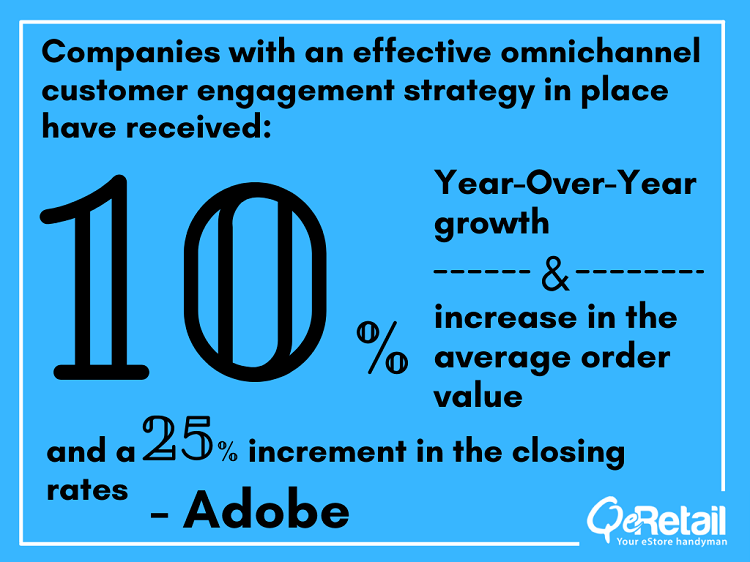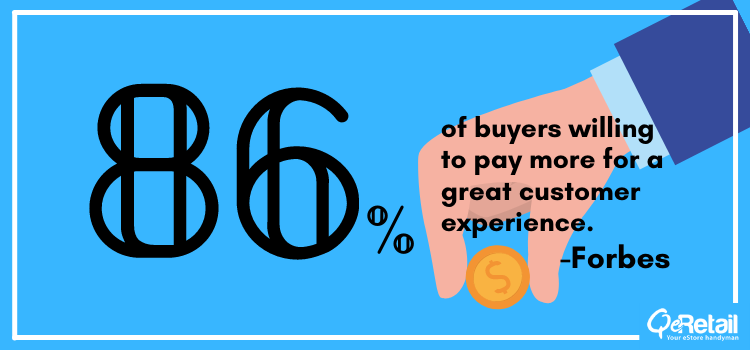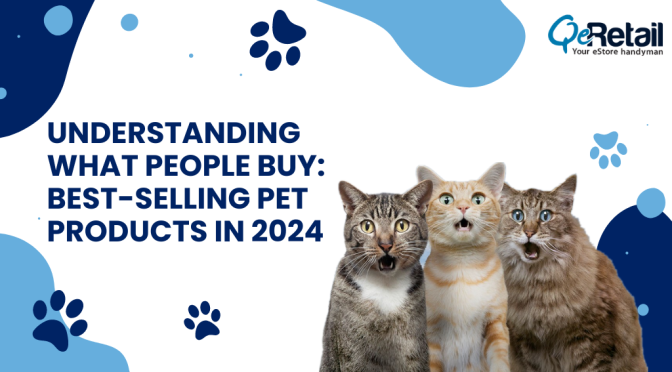With every passing year comes a new trend in the retail and eCommerce industry. Some are related to emerging retail technologies, and some bring in new sales strategies to improve business. Unlike the previous years, 2020 cannot be considered a usual year in the wake of COVID 19. On the one hand, COVID 19 had a major impact on people’s lives, forcing them to stay at their places, but led to a surge in online ordering, which meant a massive profit to the eCommerce industry. According to McKinsey, at the pandemic’s peak, ten years of eCommerce growth happened within just 90 days.
This is one of the most significant milestones for the eCommerce industry that no one ever thought would reach so rapidly. The online world became the new normal for everyone. Consumers shifted to online shopping. The marketers started stepping on the online platform. The pre-existing digital marketers adopted new ways to improve their business. In short, you can say that before the outburst of COVID-19, the digital transformation was crawling, but now it has hastened as never before.
This rapid technological adaptation brought in some revolutionary changes in the market to cater to the changing customer demands. If you also want your business to stay relevant to your customer in the coming years, you should adapt to the change. Here are some trends that came into the picture during the pandemic in 2020 and are expected to continue to be followed post-COVID in 2021.
Table of Contents
7 Retail and eCommerce Trends to Follow in 2021
Omni Channel Retailing Strategy

(Statistics – Adobe)
Adopting an omnichannel retailing strategy could be an excellent approach for the retail and eCommerce industry in 2021. Omnichannel retailing enables you to remove friction from the customer purchase cycle. It would be best to build a technological foundation that allows you to create an immersive and unified experience for your customer.
The customer should easily buy products from your brand regardless of the channel they are contacting you. The channel can be anything like your website, brick-and-mortar store, or social media. The only challenge here is to unify the customer experience with your brand.
80% of the companies have already started investing in the omnichannel experience. One of the successful examples of this approach is Facebook shops. Facebook shops allowed the customers to buy from the sellers through their social media account directly. The approach diminished the restriction of the customers to purchase only through the third-party app. This benefited not only the customers but also the marketers. Being the world’s largest social media network, Facebook increased its brand reach, bringing in more customers.
Influencer Marketing will Observe a Boom.
The digital transition wasn’t only for shopping and eCommerce; it also expanded people’s social circle. The entertainment applications like Tik Tok and Instagram brought people closer to each other, allowing them to share their experiences on products/ services.
Initially, influencer marketing was restricted to celebrities. They used to capture selfies and post them with captions to promote the brand. Now, things have transitioned to a bit more real and aesthetic approach. Customers like to hear from genuine and authentic users about the brand.
Today the customer is more aware, trusting the authentic voice more than that crafted one. Before investing in a brand, they go through the reviews available on various platforms, like Facebook Live, IGTV, YouTube, etc. Considering the importance of influencer marketing, the brands are reaching out to more authentic influencers and adopting new eCommerce Social Media Marketing strategies to promote and review their products and services. This trend will continue in 2021 as well.
Phygital (Physical+ Digital) Marketing- Technifying the Offline Spaces
Another trend that is grabbing a lot of eyeballs is creating an online experience in the offline space. Even though the world is growing digital, the importance of brick-and-mortar stores cannot be denied. Sometimes people do prefer purchasing from the store in the wake of immediacy. No matter how fast an eCommerce tries to serve the customer, it cannot immediately avail of the products.
However, on the flip side, the convenience of finding products in a matter of clicks and checking out without waiting in a long queue gravitates the customers towards eCommerce. So, the best way to attract the customers to your brand and increase sales is to provide them a blend of both. Create a solution that facilitates the services of both online and offline shopping- Phygital Marketing Experience.
Allow your customer to both pick up their product from the nearby store and get it delivered at his place. Many of the companies have already adopted it and brought it into practice. An advanced version of it initiated by Amazon for fresh groceries- Amazon Go, fueled this trend. Amazon Go empowers the customers to take the online experience at offline spaces.
Advanced Technology Incorporated in the Online Shopping Process
The pandemic brought a huge change in the shopping behavior of the customer. Bound to stay at their homes, the technology helped the customers through their purchase decision. The Augmented reality feature available in the apps empowered the customer to virtually try out the products, thereby settling on a more appropriate decision.
Not only to the customers, but AR also proves to be beneficial for the companies as well. According to Shopify, AR content products’ interactions showed a 94% greater conversion rate than the products without the AR content.
Technology can also help you offer a personalized shopping experience to your customers. You can use technologies like Artificial Intelligence, Machine Learning, and chatbots to assist your customers through their shopping journey.
Give Your Digital Marketplace a Human Touch
Give your lifeless product pages and website a human touch by incorporating useful content. Customers prefer to indulge with brands that justify their business value and serve the customer’s needs. One of the efforts in this direction can be including brand identities in your marketplace. These identities can coach the customer through their shopping preferences.
Amazon allows the brands to create their brand identities and connect to their customers. It facilitates the brand to create authentic brand-related content such as stories, videos, and posts on the Amazon platforms. Amazon users can access this content and use it in their interest.
This approach enhances customer engagement with your brand and lets you co-create the product along with your customer. Gorjana, a boho jewelry brand, sets a great example of product co-creation. Gorjana created an application that allows users to customize their jewelry designs based on their choices.
Customer Experience Will Always Remain The Key

(Statistics – Forbes)
One of the most significant factors that decide a business’s success is the customer experience with your brand. The customer experience(CX) has always been crucial for businesses and will continue to be. CX plays a crucial role in the customer-business relation and in deciding their journey with your brand.
The customer experience can earn an additional 700 million USD for the companies having an annual income of 1 Billion USD. Hence, the companies should focus on the customer experiences. Numerous factors contribute to the customer experience, including product/service quality, reviews, pricing, and last but not least, the shipping process.
A customer desires the brand to offer a fast, sustainable, branded, and free shipping process, based on which he takes the further decision. PwC reports, 88% of customers are ready to pay extra charges for same-day or faster delivery. Also, do not forget about the packaging of the product, as it reflects your brand.
Healthcare and hygiene will be the Priority.
The COVID-19 pandemic made people more aware of their health and hygiene, changing their lifestyle preferences. Now people are more drawn towards the cleanliness and healthcare norms followed by the companies. Hence, the companies should take care of these factors while handling their product and customer and employee dealings.
If you are a seller who deals with groceries and health care products, you should be more careful. The more hygienic your products, the longer will be the customer’s journey with your brand. Also, you can include hygiene products into your business, as this trend will continue in the coming year.
Wrapping Up
Preemptive strategizing is an excellent approach to stand firm during significant changes!
One of the biggest lessons taught by the pandemic was- to be always prepared for the Uncertain. The best way to do so is to be vigilant and prepare yourself to deal with unexpected changes. This article was one such contribution for the marketers.
Being a seller/marketer, you should understand that the customers’ expectations are never-ending. It will only rise in the future to meet up with which you should try to understand your customers closely.
Formulate strategies that keep your business growing by attracting new customers and retaining the existing ones. Where retaining the existing customers costs you less, they produce higher sales and profit. So, keep on conducting loyalty programs to be in their good books. In case you need assistance with the process, reach out to our marketing experts and brace yourself for the post-COVID world.







